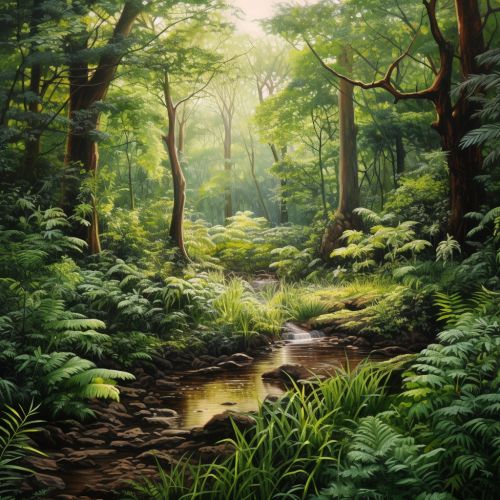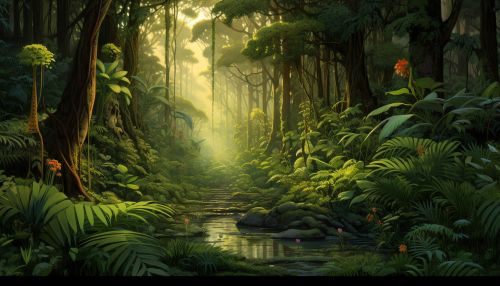Seasonal Forest
Introduction
Seasonal forests, sometimes also referred to as monsoon forests, are a type of forest ecosystem characterized by distinct wet and dry seasons. Unlike rainforests, which receive consistent rainfall throughout the year, seasonal forests experience periods of heavy rainfall followed by periods of drought. This unique climatic pattern has a profound influence on the flora and fauna that inhabit these forests, as well as the overall structure and function of the ecosystem.
Geographical Distribution
Seasonal forests are found in several regions around the world, including parts of South and Southeast Asia, Central and South America, and Sub-Saharan Africa. These forests are typically located in regions with a tropical monsoon climate or a tropical savanna climate, both of which are characterized by distinct wet and dry seasons.


Flora
The flora of seasonal forests is highly diverse and varies depending on the specific region and climate. However, a common characteristic of these forests is the presence of deciduous trees, which shed their leaves during the dry season to conserve water. This is in contrast to the evergreen trees found in rainforests, which retain their leaves year-round. Other common plant species in seasonal forests include various grasses, shrubs, and ferns, many of which have adapted to survive the periods of drought.
Fauna
The fauna of seasonal forests is equally diverse and includes a wide range of mammals, birds, reptiles, amphibians, and insects. Many of these species have evolved unique adaptations to survive the fluctuating conditions of the wet and dry seasons. For example, some animals may enter a state of aestivation (a form of dormancy) during the dry season, while others may migrate to more favorable habitats.
Ecological Significance
Seasonal forests play a crucial role in maintaining global biodiversity, as they provide habitat for a vast array of species. They also play a key role in the global carbon cycle, as the trees and other vegetation in these forests absorb carbon dioxide from the atmosphere and store it in their biomass. This process, known as carbon sequestration, helps to mitigate the effects of climate change.
Threats and Conservation
Like many other ecosystems, seasonal forests face a number of threats, including deforestation, climate change, and invasive species. These threats can lead to habitat loss and degradation, which in turn can result in the loss of biodiversity. Conservation efforts for seasonal forests typically involve a combination of protected areas, sustainable forest management practices, and community-based conservation initiatives.
